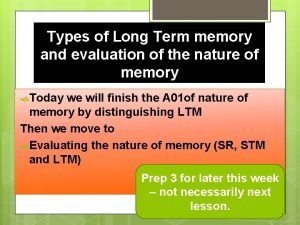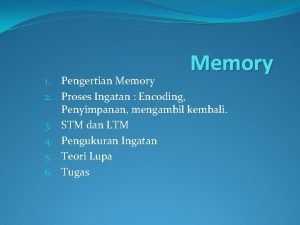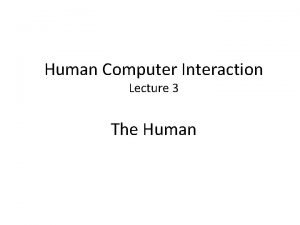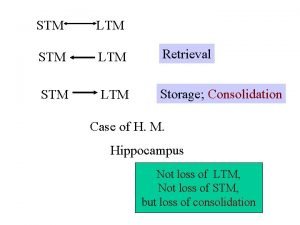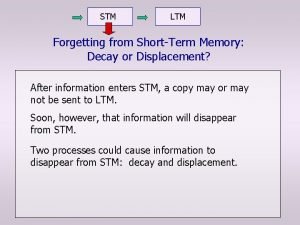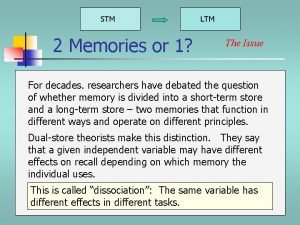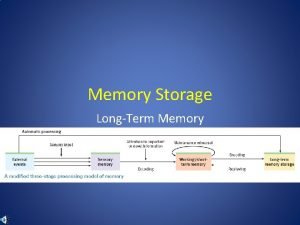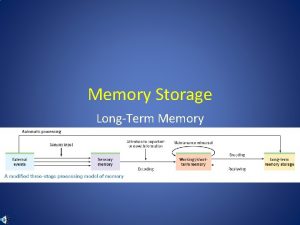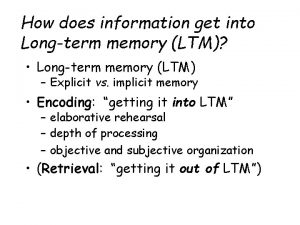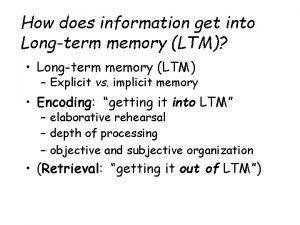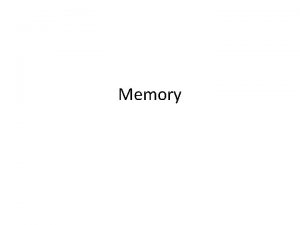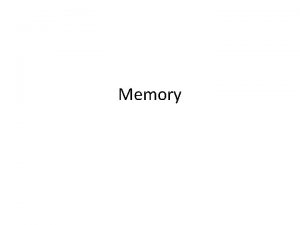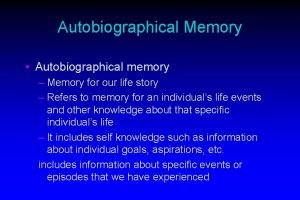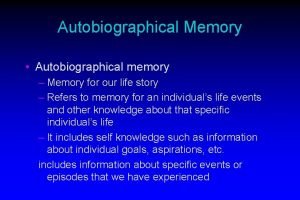Longterm memory LTM Repository for all our knowledge





















- Slides: 21

Long-term memory (LTM) Repository for all our knowledge slow access ~ 1/10 second slow decay, if any huge or unlimited capacity Long-term memory is intended for the long-term storage of information

Long-term memory (LTM) There are three main activities in LTM Storage or remembering of information Forgetting Information retrieval

LTM - Storage Information is placed in LTM from STM (working memory) though “rehearsal” This process can be optimized in a number of ways

LTM - Storage Ebbinghaus performed numerous experiments on memory, using himself as a subject. He discovered that “amount learned was directly proportional to the amount of time spent in learning” this is known as total time hypothesis “amount retained proportional to rehearsal time”

LTM - Storage Baddeley and others suggest that learning time is most effective if it is distributed over time. This is known as distribution of practice effect optimized by spreading learning over time However, rehearsal is not enough to learn information well. If the information is not meaningful it is more difficult to remember

Try this! List A: Faith, Logic, Value, , Large, Age, Path, Magic, Success, Huge, Precision

Try this! List B: Boat, Tree, Toy, Pen, Plate, Lamp, Wood, Cycle, Table, Clock

Tips-for Learning Structure, meaning and familiarity information easier to remember if it follows the above

Structure- alignment - names Usually scanning for surnames make it easy! Umarani Jayaraman Masilamani V Noor Mahammad Sadagopan N Sivaselvan B Jayaraman , Umarani V, Masilamani Mahammad, Noor N, Sadagopan B, Sivaselvan

LTM - Forgetting There are two main theories of forgetting Decay and interference Decay Information held in LTM may eventually be forgotten Information is lost gradually but very slowly Jost’s law which follows from this, states that “if two memory traces are equally strong at a given time the older one will be more durable”

LTM - Forgetting Interference New information replaces old: retroactive interference Old may interfere with new: proactive inhibition Forgetting is also affected by emotional factors

LTM - Information retrieval Recall Information reproduced from memory It can be assisted by cues, e. g. categories, imagery Recognition The presentation of information provides the knowledge that the information has been seen before less complex than recall - information is cue

Try this!

Try this!

Try this! (Categories are easier to remember)

Tips to Improve your memory 1. bun 2. shoe 3. tree 4. door 5. hive 6. sticks 7. heaven 8. gate 9. wine 10. hen

Improve your memory (try to visualize it) 1. bun 2. shoe 3. tree 4. door 5. hive 6. sticks 7. heaven 8. gate 9. wine 10. hen

The model human processor (MHP) (card, moran and newell, 1983) Model human as three interacting subsystems Perceptual system Cognitive system Motor system

The model human processor

The model human processor

The biology of the model
 Lts kernel
Lts kernel Thomas silverstein art
Thomas silverstein art Types of ltm evaluation
Types of ltm evaluation What are the types of memory in psychology
What are the types of memory in psychology Perbedaan stm dan ltm
Perbedaan stm dan ltm Derive logically necessary conclusion from given premises.
Derive logically necessary conclusion from given premises. Stm ltm
Stm ltm Stm ltm
Stm ltm Stm ltm
Stm ltm Knowledge management repository
Knowledge management repository Name all the lines
Name all the lines Episodic memory
Episodic memory Explicit and implicit memory
Explicit and implicit memory Long term memory vs short term memory
Long term memory vs short term memory Internal memory and external memory
Internal memory and external memory Primary memory and secondary memory
Primary memory and secondary memory Physical memory vs logical memory
Physical memory vs logical memory Which memory is the actual working memory?
Which memory is the actual working memory? Page fault
Page fault Virtual memory in memory hierarchy consists of
Virtual memory in memory hierarchy consists of Eidetic memory vs iconic memory
Eidetic memory vs iconic memory Shared memory vs distributed memory
Shared memory vs distributed memory


